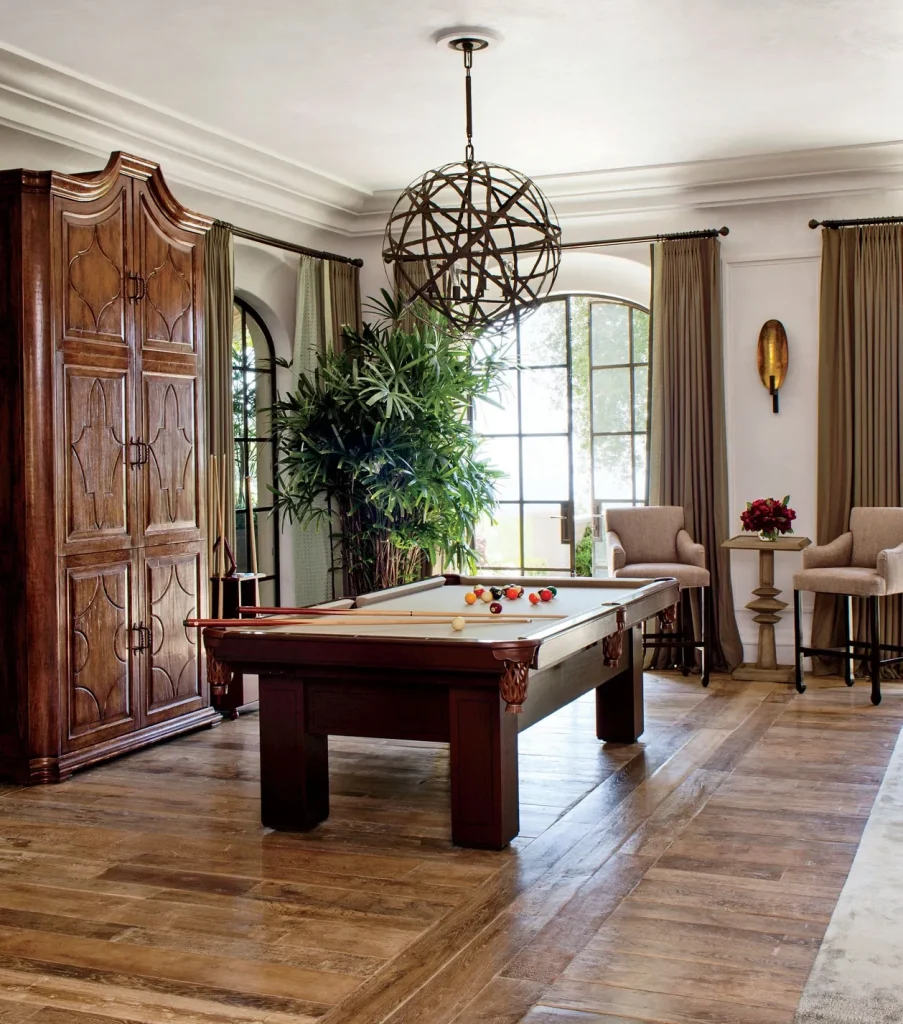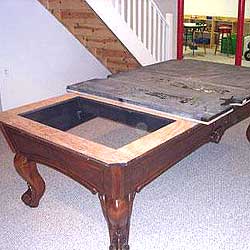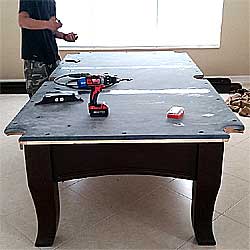Call us; 1-508-254-5671
Lexington, MA
Pool Table Billiard Movers and Repair
With 30 years of pool table best practices. Lexington, Massachusetts
Where can I find professional repair, re-felt, re-level services for my pool billiard table? Who is a reliable billiard pool table mover for moving my pool table?
Safe way to move pool table.
I acquired a billiard table from the web, and it will be moved and installed by who? Corner Pocket Pool Table Services, Your safest, best choice. In Lexington, MA, Massachusetts MA, New Hampshire NH, Vermont VT, Rhode Island RI, Pool billiard table work.
Pool table felt replacement and movers, fixing and relocating pool tables in Lexington, Massachusetts neighborhoods for over thirty years. We have been repairing and moving all brands and styles of pool tables.
Corner Pocket Pool Table Service is run entirely by family, and covering Lexington, Massachusetts. Billiard and pool table movers and service experts.
Tune-up and re-felt service for your billiard table, or transport your table from Lexington to anywhere within new england.
Five star ratings and reviews, Lexington, Massachusetts.

Lexington, MA Local Pool Table Movers
Lexington, MA Local Billiard Table Movers
Move a pool table from Lexington, MA
Move a pool table to Lexington, MA
Lexington, MA Pool Table Moving
Companies that move Pool Tables
Lexington, MA Re-Felting Pool Tables
Lexington, MA Pool Table Repairs
Lexington, MA Fix my Pool Table
Lexington, MA Pool Table Refelting
Lexington, MA Refelting A Pool Table
Lexington, MA Pool Table Mover

Lexington is a suburban town in Middlesex County, Massachusetts, United States. It is 10 miles (16 km) from Downtown Boston. The population was 34,454 as of the 2020 census. The area was originally inhabited by Native Americans, and was first settled by Europeans in 1641 as a farming community. Lexington is well known as the site of the first shots of the American Revolutionary War, in the Battle of Lexington on April 19, 1775, where the “Shot heard ’round the world” took place. It is home to Minute Man National Historical Park.
Native Americans inhabited the area that would become Lexington for thousands of years prior to European colonization of the Americas, as attested by a woodland era archaeological site near Loring Hill south of the town center. At the time of European contact, the area may have been a border region between Naumkeag or Pawtucket to the northeast, Massachusett to the south, and Nipmuc to the west, though the land was eventually purchased from the Naumkeag. The contact period introduced a number of European infectious diseases which would decimate native populations in virgin soil epidemics, leaving the area largely uncontested upon the arrival of large groups of English settlers in the Puritan Great Migration. In 1639, the Massachusetts General Court purchased the land that would become present day Lexington, then within the boundaries of Cambridge, from the Naumkeag Squaw Sachem of Mistick.
The area that is now Lexington was first settled circa 1642 as part of Cambridge, Massachusetts. As the population increased, Lexington was incorporated as a separate parish, called Cambridge Farms, in 1691. This allowed the residents to have their own local church and minister, although they were still under jurisdiction of the Town of Cambridge. Lexington was incorporated as a separate town in 1713. It was then that it got the name Lexington. How the town received its name is the subject of some controversy. One view is that it was named in honor of Lord Lexington, an English peer. Another view is that it was named after Lexington (which was pronounced and is today spelled Laxton) in Nottinghamshire, England.
In the early colonial days, Vine Brook, which runs through Lexington, Burlington, and Bedford, and then empties into the Shawsheen River, was a focal point of the farming and industry of the town. It provided for many types of mills, and in the 20th Century, for farm irrigation.
On April 19, 1775, what many regard as the first battle of the American Revolutionary War was the Battle at Lexington. On the night of April 18, the British Army had sent out 800 grenadiers and light infantry soldiers on foot from Boston, with the intention of destroying Colonial gunpowder and cannons that were being stored in Concord, as well as capturing two leaders of the Sons of Liberty, John Hancock and Samuel Adams, who were staying in Lexington. Hancock and Adams were warned of the danger by two alarm riders, Paul Revere and William Dawes, who alerted the countryside of the British movements. When the British soldiers arrived on the Lexington Common not long after sunrise, they faced 77 men of the Lexington militia, commanded by Captain John Parker. Someone—still unknown to this day—fired a shot, provoking an exchange of musket fire between the two sides.[citation needed] Eight Lexington militia men were killed, dozens more wounded. After the rout, the British marched on toward Concord. There, several hundred militia and minute men from nearby towns assembled near the Old North Bridge to turn back the British and prevent them from capturing and destroying the Colony’s stores of gunpowder and military equipment.
Today, the town annually commemorates the battle on the Battle Green in the Downtown with a reenactment, as part of its Patriots Day festivities.
For decades after the Revolutionary War, Lexington grew modestly while remaining largely a farming community, providing Boston with much of its produce. Many of these farms became dense housing developments and subdivisions by the 1970s. One notable housing development was the Peacock Farm residential neighborhood. It was designed by architect Walter Pierce and was built between 1952 and 1958. As of 2012, the neighborhood was on the National Register of Historic Places. Lexington always had a bustling downtown area, which remains to this day. Lexington began to prosper, helped by its proximity to Boston, and having a rail line (originally the Lexington and West Cambridge Railroad, later the Boston and Maine Railroad) service its citizens and businesses, beginning in 1846 until 1981. In 1984, Due to the rapid urbanization that occurred in many other suburbs like Lexington, The MBTA proposed expanding the Red Line through Lexington, terminating in Bedford. Despite Lexington and Bedford being on board with the idea, Arlington residents lobbied against the plan and it was shot down by the Board of Selectmen.
Diverse Tables
From basic models, to less common; custom, hand-made tables and everything in the middle. We’ve seen a great many them. Not to say that we have really seen each model of table that there is… The standards are much the same starting with one then onto the next. Occasionally we see a new technique. We love to learn these, and it is always enjoyable to have a finished product you will love!Distinctive Houses
From Landmark houses in Lexington, to delightful little homes, we’ve placed tables in every one of them.
Also, we treat every house like our own. We anticipate giving you the best working pool table you’ve ever played on.

